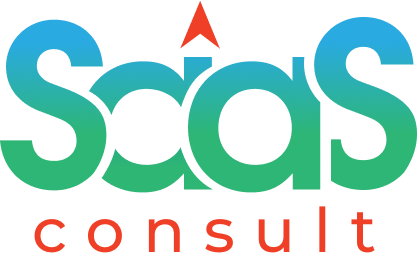In the digital age, performance marketing has become a vital component of businesses’ growth strategies. It focuses on driving measurable results and optimizing marketing efforts to achieve specific goals. For many businesses, especially those with physical locations, local SEO (Search Engine Optimization) plays a crucial role in enhancing performance marketing success. In this comprehensive 1000-word article, we will explore the best practices for leveraging local SEO in performance marketing and how it can lead to increased visibility, foot traffic, and conversions.
Understanding Local SEO in Performance Marketing
Local SEO is a subset of traditional SEO that focuses on improving a business’s online visibility for local searches. When users search for products or services with a location-specific intent, search engines aim to deliver results that are most relevant to their location. Local SEO involves optimizing various factors to ensure that a business appears prominently in local search results, local packs, and Google Maps.
For businesses with physical locations or those that serve specific geographical areas, local SEO is a game-changer. It presents an opportunity to attract local customers actively seeking products or services in their vicinity, making it an essential component of any performance marketing strategy.
1. Optimize Google My Business (GMB) Listing
Google My Business is a free tool provided by Google that allows businesses to create and manage their online presence on Google. A fully optimized GMB listing is the foundation of local SEO. To ensure maximum impact on performance marketing efforts, businesses should:
- Provide Accurate Information: Enter accurate business name, address, phone number, and other essential details.
- Choose Relevant Categories: Select the most relevant business categories to improve visibility in relevant searches.
- Add High-Quality Images: Upload high-resolution photos that showcase the business, products, and services.
- Collect and Respond to Reviews: Encourage customers to leave reviews and respond to them promptly to build credibility and trust.
An optimized GMB listing can significantly increase a business’s chances of appearing in the local pack and Google Maps results, driving more foot traffic to physical locations.
2. Local Keyword Research
Conducting local keyword research is fundamental to effective local SEO for performance marketing. Businesses should identify the specific keywords and search terms that local users use when seeking their products or services. Local keywords often include location-specific phrases, such as “best coffee shop in [city]” or “plumber near me.”
By incorporating these local keywords into website content, meta tags, and GMB descriptions, businesses can align their online presence with the needs and preferences of local searchers. This increases the chances of showing up in local search results and attracting relevant, high-intent traffic.
3. On-Page Optimization for Local SEO
On-page optimization plays a significant role in local SEO and overall performance marketing success. Here are some key on-page elements to consider:
- Page Titles and Meta Descriptions: Include local keywords in page titles and meta descriptions to signal relevance to local searches.
- URL Structure: Use descriptive and location-specific URLs to provide additional context to search engines.
- Content with Local Focus: Create location-specific content that addresses the needs and interests of the local audience.
By optimizing on-page elements for local SEO, businesses can enhance their chances of ranking higher in local search results and capturing the attention of potential customers.
4. NAP Consistency
NAP (Name, Address, Phone number) consistency is a critical factor in local SEO. Businesses must ensure that their NAP information is consistent across all online platforms, directories, and listings. Inconsistencies can confuse search engines and lead to lower local search rankings.
To maintain NAP consistency, businesses should conduct regular audits of their online presence and update any outdated or incorrect information. Tools like Moz Local and Yext can help manage and maintain accurate NAP data across various platforms.
5. Local Citations and Backlinks
Local citations are mentions of a business’s NAP information on external websites, directories, and local listings. These citations play a significant role in local SEO and can improve a business’s visibility in local search results. Businesses should ensure that their information is listed accurately in reputable local directories and websites.
Additionally, building high-quality local backlinks can further enhance local SEO efforts. Seek opportunities for partnerships and collaborations with other local businesses or organizations to earn valuable backlinks from local sources.
6. Mobile-Friendly Website
In the era of mobile-first indexing, having a mobile-friendly website is crucial for both SEO and performance marketing. Local searches are often conducted on mobile devices by users on the go. A mobile-responsive website ensures that users have a seamless browsing experience, leading to increased engagement and higher chances of conversion.
7. Local Content Marketing
Content marketing is an integral part of any performance marketing strategy. For local SEO, businesses can create content that is relevant and valuable to the local audience. This can include blog posts, articles, and videos that highlight local events, news, or trends.
By catering to local interests and concerns, businesses can position themselves as valuable resources in the community, fostering brand loyalty and attracting more local customers.
8. Online Reviews and Reputation Management
Online reviews play a crucial role in local SEO and consumer decision-making. Positive reviews can boost a business’s credibility and trustworthiness, encouraging more users to choose their products or services.
Businesses should actively encourage customers to leave reviews on platforms like Google, Yelp, and Facebook. Additionally, promptly responding to both positive and negative reviews demonstrates responsiveness and a commitment to customer satisfaction.
9. Local Social Media Engagement
Social media platforms are powerful channels for local engagement and performance marketing. By actively engaging with the local community through posts, comments, and messages, businesses can build stronger connections with potential customers.
Social media also provides an opportunity for businesses to promote local events, offers, and updates, fostering a sense of community and loyalty among local followers.
10. Measure and Analyze Results
As with any marketing strategy, measuring and analyzing results is crucial for continuous improvement. Performance marketers should track key local SEO metrics, such as local search rankings, website traffic, and conversion rates for local searches.
Tools like Google Analytics and Google Search Console can provide valuable insights into local SEO performance and help identify areas for optimization.
Incorporating local SEO best practices into performance marketing efforts can significantly enhance a business’s online visibility, foot traffic, and overall success. By optimizing Google My Business listings, conducting local keyword research, implementing on-page optimization, maintaining NAP consistency, earning local citations and backlinks, having a mobile-friendly website, engaging in local content marketing, managing online reviews, fostering social media engagement, and measuring results, businesses can leverage local SEO to connect with their local audience effectively.
As consumers increasingly prioritize local experiences, businesses that prioritize local SEO in their performance marketing strategies are well-positioned to thrive in the digital landscape and drive meaningful growth in their local markets.

